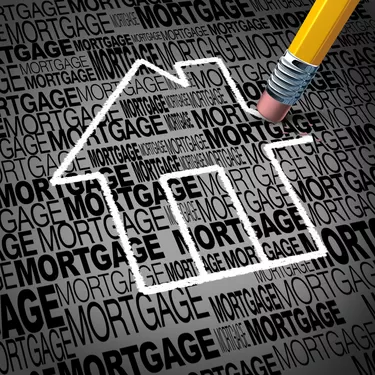
The discharge of a mortgage means that the borrower no longer is obligated to make further payments on the loan. A discharge can be the result of the mortgage being paid in full or refinanced by the borrower. A mortgage also can be discharged if the borrower files for bankruptcy.
Mortgage Discharges After Full Payoff
Video of the Day
When the principal, interest and fees have been paid in full on a home or business property, the mortgage will be discharged by the lender. At this point, ownership of the property is transferred from the lender to the former borrower. To finalize the transfer, the lender will release the lien on the property, cancel the note and mail the deed to the property owner.
Video of the Day
Refinancing a Mortgage
In a refinance, the proceeds from the new loan are used to pay off the existing mortgage. The existing mortgage is discharged, the note canceled and the lien on the property released by the lender. The new lender draws up a new mortgage note and places a lien on the property to secure the loan.
Mortgage Discharge After a Bankruptcy
This type of discharge releases the borrower from his obligation, but differs from paying off or refinancing a mortgage in that the owner will not keep the house when the bankruptcy is finalized. As part of the bankruptcy settlement, the court will issue a discharge order on the mortgage as long as the person who filed agrees to forfeit the property to the lender. After the bankruptcy is finalized, the borrower has no liability to the lender for missed payments and debts that were incurred prior to the bankruptcy filing. The borrower then can give the keys back to lender, sign documentation of the surrender and walk away from the property.
Despite the surrender of the property, the lender still needs to complete the foreclosure process to remove the borrower's name from the title.